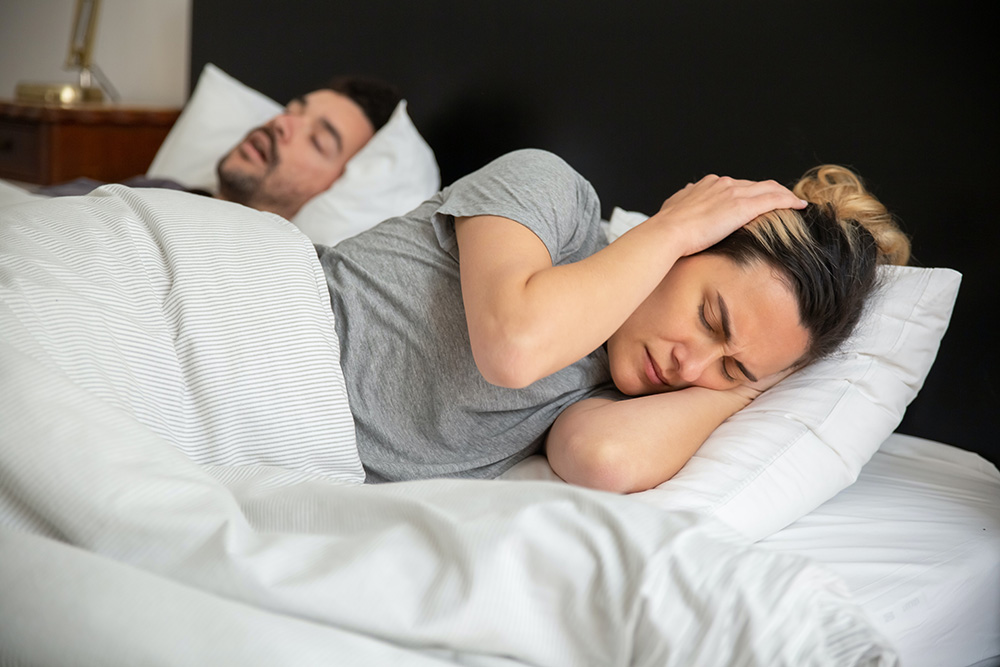Sleep apnea affects millions of people worldwide. Many people can go their entire lives suffering from the symptoms of sleep apnea and never receive treatment because it takes someone else to tell you about your snoring and difficulty breathing while sleeping. Dr. Carla Roher and the skilled Medical Arts Dentistry team have years of experience practicing dental sleep medicine and providing relief to their patients.
What is Sleep Apnea?
Sleep Apnea is a sleep disorder that occurs when a person’s breathing stops and starts while they sleep. There is a wide spectrum of symptoms that can be anything from loud snoring to something as life-threatening as heart disease. In most cases, sleep apnea is non-life-threatening and can be solved by a special device recommended by Dr. Roher.
9 Signs You May Suffer from Sleep Apnea?
The signs and symptoms of different sleep apnea include:
- Loud snoring
- Breathing stops while you sleep
- Gasping for air during sleep
- Dry mouth
- Morning headache
- Difficulty staying asleep (insomnia)
- Excessive daytime sleepiness (hypersomnia)
- Difficulty paying attention while awake
- Irritability
How Can My Dentist Help Me With Sleep Apnea?
Dental sleep medicine focuses on the use of oral appliances to treat snoring and obstructive sleep apnea (OSA). OSA is when the muscles at the back of your throat relax which allows other tissues, like your tongue, to block your airway. Oral appliance therapy is a method of using devices designed to keep your airway open. Wearing one of these devices can have you sleeping comfortably through the night on the first night of use.
Oral appliance therapy involves wearing a removable oral piece. Much like a mouthguard or retainer, you will place the device in your mouth. However, unlike the others, you wear it as you sleep. There are several types of oral appliances to treat obstructive sleep apnea. Although each device may look slightly different, there are only two main types of oral appliances:
Mandibular Repositioning Devices
Mandibular repositioning devices or MRDs are the most commonly used oral appliances for sleep apnea. MRDs reposition your lower jaw forward and slightly downward to keep your airway open while you sleep. The MRD looks just like a sports mouthguard and holds your jaw in a certain alignment.
Tongue Retaining Devices
Tongue Retaining Devices (TRD) hold your tongue in place so that it does not block your airway. TRDs come in different shapes and styles, but the most common looks like a reverse pacifier in which you place your tongue while you sleep.
Patient Collaboration
It’s important to remember that finding the right treatment for your sleep apnea can take some trial and error. Many times, Dr. Roher will ask to speak to your spouse or roommate who can hear you struggling for air when you sleep. Depending on how you improve with each device, Dr. Roher can offer different options and solutions to fit your lifestyle and condition.
Advantages of Oral Appliance Therapy
Oral appliance therapy is an effective, non-invasive treatment that fits easily into your lifestyle. Patients like oral appliance therapy because it is:
- Comfortable
- Easy to use
- Quiet
- Portable
- Easy to care for
If you or your spouse or family member is struggling with sleep apnea or if you think they may show some of the 9 signs of sleep apnea, Dr. Roher can help you find relief and breath easy. As a general dentist and dental sleep medicine expert, she has found the right treatment plan for many patients throughout Savannah, GA.

